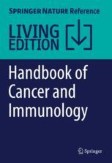Search
Search Results
-
A multivariate pattern analysis of resting-state functional MRI data in Naïve and chronic betel quid chewers
Betel quid (BQ) is the fourth most commonly consumed psychoactive substance in the world. However, comprehensive functional magnetic resonance...

-
Rising incidence of HPV positive oropharyngeal cancer in Taiwan between 1999 and 2014 where betel nut chewing is common
BackgroundThe incidence of human papillomavirus (HPV) positive oropharyngeal cancer (OPC) is rising but HPV negative OPC is decreasing in Western...

-
Incidence trends of oral cavity, oropharyngeal, hypopharyngeal and laryngeal cancers among males in Taiwan, 1980–2019: a population-based cancer registry study
In a country with a high prevalence of cigarette smoking, betel chewing, and alcohol drinking, cancers of the oral cavity, nasopharynx, and larynx...

-
Findings from a Malaysian multicentre study on oropharyngeal squamous cell carcinoma
BackgroundIn addition to the conventional aetiologic agents of oropharyngeal squamous cell carcinoma (OPSCC) such as tobacco usage, alcohol...

-
Mutational signatures and mutagenic impacts associated with betel quid chewing in oral squamous cell carcinoma
Betel quid (BQ) chewing is a prevailing risk for oral squamous cell carcinoma (OSCC) in Southeast Asia. Yet, the detailed mechanisms by which BQ...

-
DNA hypermethylation of sirtuin 1 (SIRT1) caused by betel quid chewing—a possible predictive biomarker for malignant transformation
BackgroundDNA hypermethylation of tumor suppressor genes is observed in precancerous lesions and oral cancer of individuals with the habits of betel...

-
Processing and Potential Health Benefits of Betel Leaf (Piper betle L.)
The Piper betle is a woody, perennial and climbing vine belonging to the family Piperaceae. The fresh leaves of betel vine, generally known as Paan...
-
FAM13A polymorphisms are associated with a specific susceptibility to clinical progression of oral cancer in alcohol drinkers
BackgroundSingle nucleotide polymorphism (SNP) is a genetic variation that occurs when a single nucleotide base in the DNA sequence varies between...

-
Knowledge, attitudes and practices of South Asian immigrants in developed countries regarding oral cancer: an integrative review
BackgroundOral cancer is a growing problem worldwide, with high incidence rates in South Asian countries. With increasing numbers of South Asian...

-
Genetic toxicology and toxicokinetics of arecoline and related areca nut compounds: an updated review
Areca nut (AN) is consumed by more than 600 million of individuals, particularly in some regions of South Asia, East Africa, and tropical Pacific,...

-
Household cooking fuel and gallbladder cancer risk: a multi-centre case–control study in India
PurposeGallbladder cancers (GBC), unique to certain geographical regions, are lethal digestive tract cancers, disproportionately affecting women,...

-
Neural response to betel quid cues in chewers: a functional magnetic resonance imaging study
The World Health Organization regards betel quid (BQ) as a human carcinogen. The current study analyzes whether the BQ cues can elicit activity in...

-
MiR-30a and miR-379 modulate retinoic acid pathway by targeting DNA methyltransferase 3B in oral cancer
BackgroundEpigenetic silencing of retinoic acid (RA) signaling-related genes have been linked with the pathogenesis and clinical outcome in oral...

-
Expressional variations of Kaiso: an association with pathological characteristics and field cancerization of OSCC
BackgroundA group of genetically altered cells that have not transformed into a clinical or histologically identifiable state of malignancy but...

-

-
Early relapse is an adverse prognostic factor for survival outcomes in patients with oral cavity squamous cell carcinoma: results from a nationwide registry study
BackgroundThe prognostic significance of the relapse interval in patients with resected oral cavity squamous cell carcinoma (OCSCC) is a matter of...

-
Epstein-Barr viral product-containing exosomes promote fibrosis and nasopharyngeal carcinoma progression through activation of YAP1/FAPα signaling in fibroblasts
BackgroundThe progression of nasopharyngeal carcinoma (NPC) is profoundly affected by Epstein-Barr virus (EBV) infection. However, the role of EBV in...

-
Risk of temporal lobe necrosis between proton beam and volumetric modulated arc therapies in patients with different head and neck cancers
BackgroundTo investigate the frequency of temporal lobe necrosis (TLN) soon after radiotherapy (RT) and identify differences among patients with...

-
A Global Perspective of Cancer Prevalence: The Causative Agent, the Environment, or the Genes?
Cancer is among the most leading causes of death worldwide, while breast and prostate cancers are the leading causes of cancers among females and...
